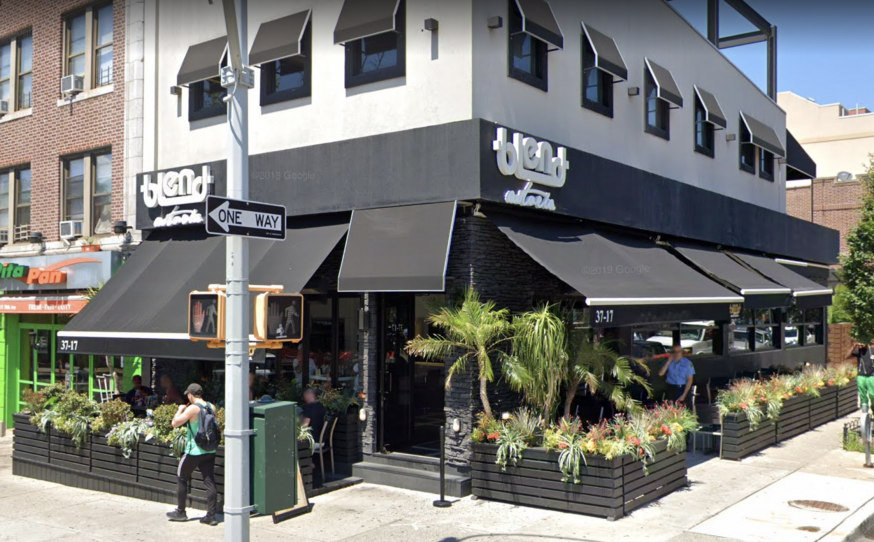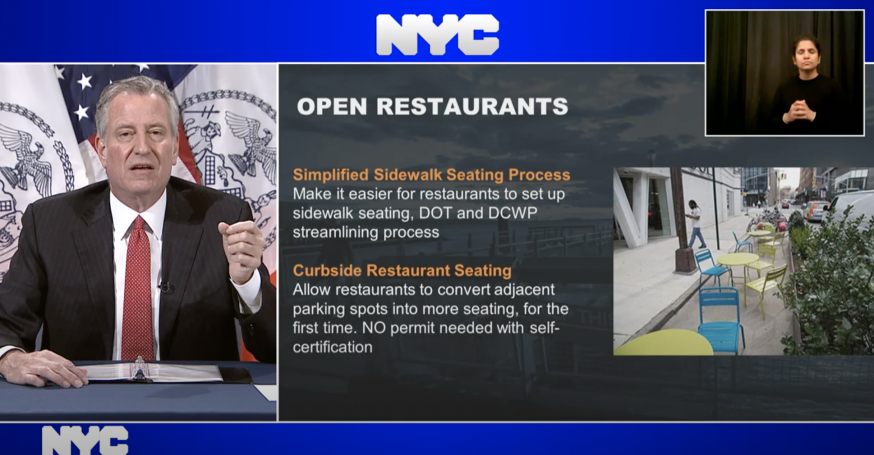
Outdoor sidewalk seating at Blend Astoria shown here in July 2018 (Google Maps)
June 4, 2020 By Allie Griffin
Mayor Bill de Blasio unveiled the city’s plan today to expand outdoor seating for restaurants, which are expected to reopen for dining in July after being shuttered for months.
New York City will begin reopening parts on its economy Monday in what is known as phase one of reopening. Restaurants and other many other businesses will follow in phase two, which may begin as early as the beginning of July, de Blasio said today.
During phase two, eateries — which have been limited to take-out and delivery only during the coronavirus pandemic — will be able to create outdoor seating space without going through the city’s cumbersome permit application process.
The outdoor seating will allow restaurant patrons to safely social distance from one another to prevent the virus from spreading. Research shows that COVID-19 is less likely to infect people outdoors.
“Our Open Restaurants plan will help these businesses maximize their customer base while maintaining the social distancing we need to beat this crisis once and for all,” de Blasio said.
The city will allow sidewalk seating for restaurants as long as there is a clear path for pedestrians and people with disabilities.
Eateries in commercial corridors will also be able to convert parking spaces to outdoor seating areas for patrons by registering online. They cannot block hydrants or bus stops and must ensure seating is located away from intersections, de Blasio said.

(NYC.GOV)
Lastly, establishments located within the confines of the “open streets” plan will be able to set up seating areas directly in front of their venue on the roadbed. The city has converted more than 45 miles of city streets from vehicular use to exclusive pedestrian and cyclist use through the open streets plan.
The city will also identify and close off traffic along commercial strips with a large number of restaurants and bars as it expands the open streets initiative in the coming weeks and months.
“This plan will enliven our commercial corridors and provide businesses with a much-needed opportunity to generate further revenue while maintaining safety,” said Jonnel Doris, Commissioner of the NYC Department of Small Business Services.
